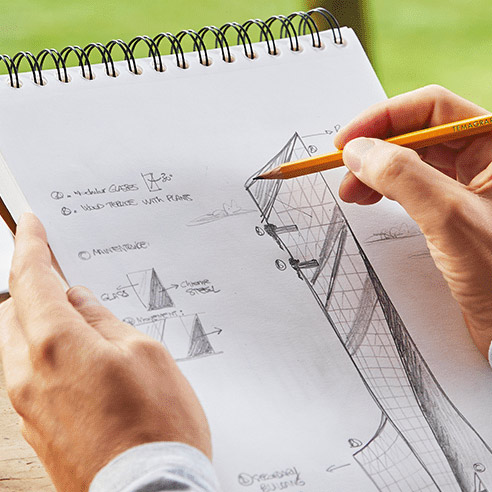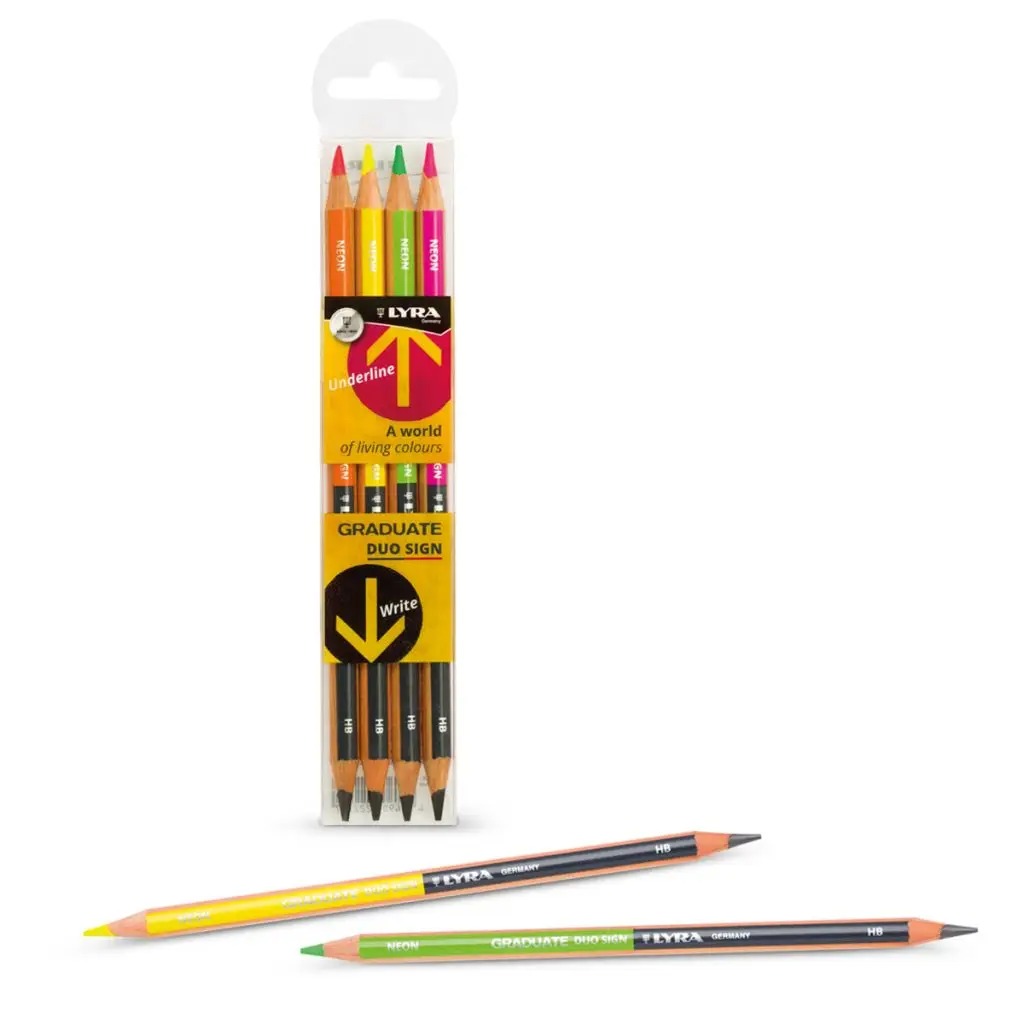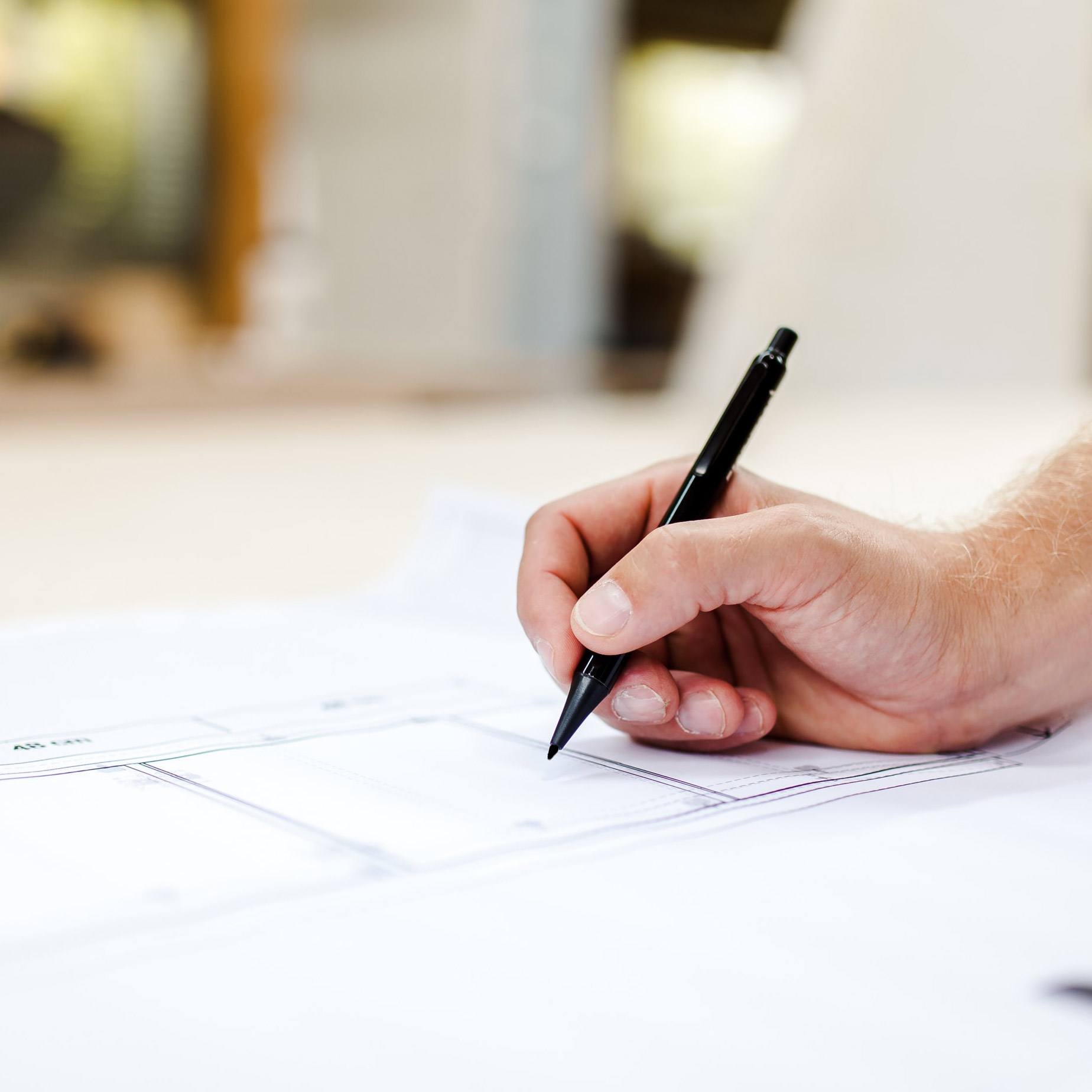From the initial sketch to the final diagram, technical drawing is multi-faceted! Therefore, you need to select each medium carefully, in correlation with the nature of your work.

1. Graphite
The professional's number one tool! It comes as pencils, sticks and leads to be inserted in mechanical pencils. Select it on the basis of the drawing you need to create.
The hardness of the lead determines the color and strength of your line.
- B (Black) + a number: soft: these points are used for strong, dense lines, with screens and surfaces to be blackened.
- H (Hard) + a number: hard: for making narrow, grayer lines.
- HB: intermediate: for a sustained gray, the most versatile lead of all.
The thickness of the lead conditions the line.
- Do your sketches with a thick (2 mm and more) lead, for a wide range of lines.
- Save thin points (less than 1 mm) for details.


2. Color pencils
Their leads consist of a mixture of pigments, kaolin, wax and glue.
-Classical pencils with hard points, for narrow lines.
-Thick, soft pencils loaded with pigments, for coloring and shading surfaces.
-Watercolor pencils can be reworked with a wet paint brush, for effects: the drawing texture fades, smoothing the color.

3. Pens
They come in a number of forms, for various kinds of work:
- Metal pen: the pressure applied and the slant relative to the paper diffuses more or less ink, allowing for an infinite variety of lines (including very narrow, with the back of the pen nib).
- Stylographic pens: they release a continuous amount of ink and are appropriate for both quick sketches and precise lines.
- Reed: this piece of bamboo sharpened to a point releases very little ink and is the perfect way to add shadows and shading.

4. Markers
How fast you move determines the opacity of your stroke. The possibilities vary, from the thinnest line to filling in wide areas, depending on the flexibility and thickness of the point of your felt-tip pen:
- Very hard "needle" tips, and slightly more flexible "fiber" tips, create lines with a constant thickness.
- Flexible tips, for output close to a paint brush.
Media designed to last
- Some very practical models have two tips with different widths that can be switched.
- Refillable felt-tip pens are preferable.
- Classical tips are beveled, but they also come rounded, conical and even flat.
5. Other media
Dry or wet: dry pastels, watercolor paint, ink applied with a paint brush… Give leads, markers, pens and ballpoint pens a try with other techniques.
An architectural drawing done with a ball-point pen, then lightly colored with watercolors, will look much more realistic!
Recommended product:
Calque - Graphic Arts
